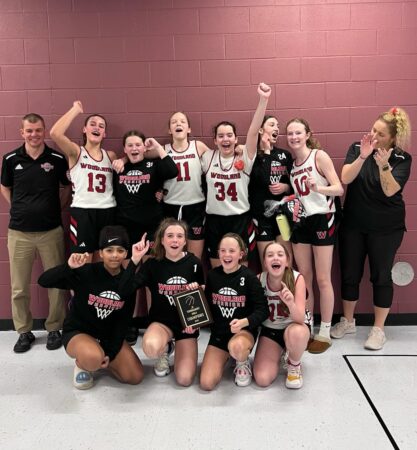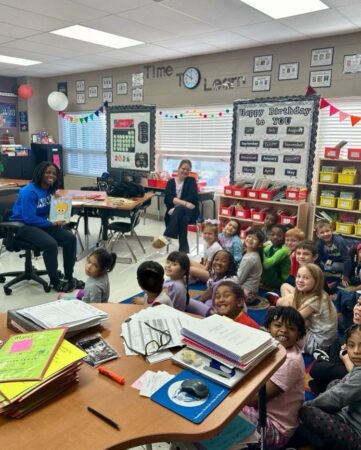Whether your school or district is looking for ways to more effectively engage its school community, focused on empowering student voice, activating an enrollment initiative, or looking to attract and retain top educators, social media can help. Certainly you’ll want to be putting out content and storytelling around all the great things happening in your classrooms. But, content about clubs, athletics, and activities can also be especially effective. Teams, coaches, individual athletes, rivalries, and traditions tend to capture headlines and attention, and many students, families, and community members are eager to follow them from game to game and season to season. What’s more, extracurriculars and the support around them can be attractive for students, families, and educators looking for a new school community to call home. But how, exactly, should schools be covering athletics on social media? Here are a few things for athletic directors or activity directors (and others involved) to consider in outlining and implementing a game plan.
Page Setup & Access
Take a look at how athletics content gets out to your audience and determine where it makes sense to have specific pages devoted perhaps to the athletics department as a whole or specific teams or programs. As you’re taking inventory of the athletics pages your school has established and those it may want to consider, make note of who owns and operates them–that is, who has admin access–so you can begin working through reigning rogue accounts (those owned by someone outside your school or district staff).
Whether you have a page specifically devoted to your basketball program or not is a decision unique to your school that may be based on several factors (like, how well-established the page is, whether you have admin access to it, and whether keeping it aligns with broader goals). However, there are some best practices to consider when it comes to page setup and access.
First, make sure your pages have at least two admins. You’ll also want to centralize access and customize permissions for key roles like school PR and communications professionals (at the building or district level), athletics/activities directors, principals and other administrators, and perhaps educators and students involved in planning and coordinating content. You’ll need to be able to assign specific access permissions based on the role each user type will play. (By the way, Class Intercom can help; it’s a social media management tool designed specifically for school use with unlimited users at no additional cost and customizable access permissions for users of all types.)

Stars Basketball Club celebrates the tournament win of a local middle school’s JV basketball team, that included many Stars players.
“Our target audience is [parents who are] clued into how to get their kids active and help them pursue the things they really like to spend their time doing. Class Intercom has been a big part of our ability to push our brand and the opportunities available to those families.”

Girls basketball players from Conway Public Schools spend their morning reading to students at a district elementary school.
Content Creation
With your pages in order, be sure to also consider how you’ll go about creating content for athletics teams, pages, and events. Depending on how many programs and teams your athletics department supports, and whether it includes clubs, activities, and other extracurriculars, planning and creating content for this initiative can be a big job. The best approach is to enlist the help of others by building a team of content creators who can help you collect content, surface and pursue stories, interview athletes and coaches, source photos and videos from practices and events, and manage logistics like posting season schedules, gameday highlights, score updates, and finals.
Simply stated, you can’t be everywhere at once, which means you’ll need some systems and processes in place to plan content, source photos and videos, assign coverage and responsibilities, and coordinate edits and feedback as posts are drafted and submitted for review. Class Intercom can help here too. The social media management platform provides the ability to source drafted posts from unlimited users across your school community, install moderators who review, edit, and approve it, and publish directly to social channels like Facebook, LinkedIn, Instagram, and X (Twitter).
Publishing vs. Actively Managing
It’s important to consider what your athletics program actually needs when it comes to social media. Tools that help schools publish updates to social can be helpful, but they’re not the only thing. In fact, sporting events and athletics teams can get people particularly fired up–making them a potential source of controversy and sometimes negativity. The best way to combat this is to stay ahead with a consistent stream of stories and content highlighting all the great things happening within your school’s athletics programs (both on and off the field). But, when issues do arise, you’ll need tools at your disposal to address and contain them swiftly.
Page admins need to be able to actively manage athletics content. That means having the ability to moderate outbound content being sourced from your team of content creators, as well as the ability to monitor inbound content, including messages, comments, and reviews on your pages. If you’re working across multiple pages and channels, you’ll need a central place to track and manage all that content–and even flag some types of content that need quicker, more direct attention than others.
Next Steps
With a few simple systems and processes in place, schools and districts can more effectively collect, curate, and share athletics content to reap its many benefits. Class Intercom works with athletic directors, clubs, and activities programs nationwide to help them do exactly that. Interested in learning more about how we can work together to maximize your school’s social media presence? Follow the link below to see a demo.
